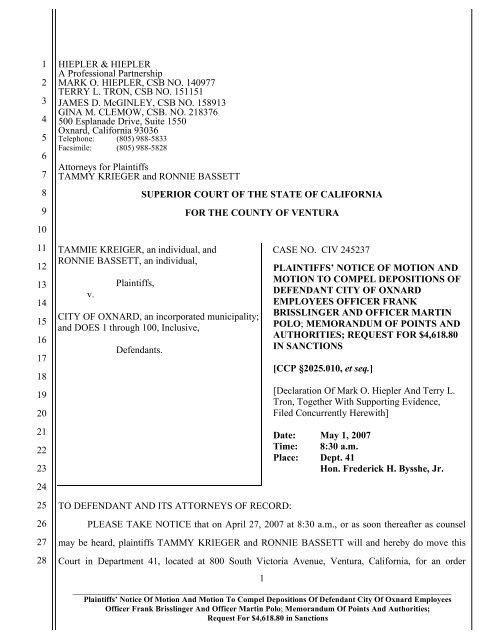

This effort, commonly referred to as a “meet and confer,” can be an in-person meeting, but may sometimes also take form in a written notice. Other situations may warrant a motion to compel, including incomplete responses, skipped questions, or an outright refusal to answer.īefore a party resorts to filing a motion to compel, the court often expects the requesting side provides a “good faith effort” to obtain a response from the opposition. If one side neglects to respond to requests for discovery by the deadline, the requesting party may choose to file a motion to compel discovery. Each side reviews propounded discovery, using it to build their case. About compelling discoveryĭiscovery is a key step in the legal process, allowing each party to request specific information from the other party. The opposing side will receive copies of the documents as well. Notice of hearing : A written notice provided to the opposing side informing that the motion to compel has been filed with the court, including the date and time of Motion day.Īfter preparing the documentation, the originals are then submitted to the court.Points and Authorities : Supporting documentation for the motion detailing the submitted request for discovery, the opposing side’s failure to comply, and an explanation of why the discovery is relevant to the case.Motion : A request to the court to issue an order to compel discovery.To file a motion for order compelling discovery, you’ll usually need to prepare the following (depending on the local court’s rules): The requesting party files a motion to compel discovery responses if the opposing party continues to deny the discovery request.“Meet and confer”: an informal attempt is made to resolve disputes about the discovery request.

#MOTION TO COMPEL TRIAL#
In the early stages of what is known as the discovery process, there is an exchange of information and evidence from the two opposing parties.īefore the trial even begins, disputes can occur during the discovery process, however. Do I Need a Police Report After a Car Accident?Īfter a personal injury accident, the ensuing legal process can be a lengthy and complicated ordeal.What Kind of Damages Can I Sue for After a Car Accident?.Can I Recover Lost Wages After an Accident?.What to do After a Car Accident That’s Not Your Fault.When Should You Call a Lawyer After a Car Accident?.



 0 kommentar(er)
0 kommentar(er)
